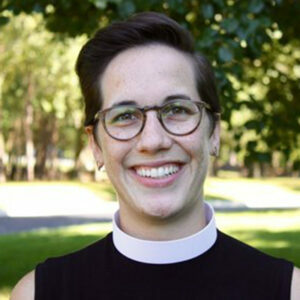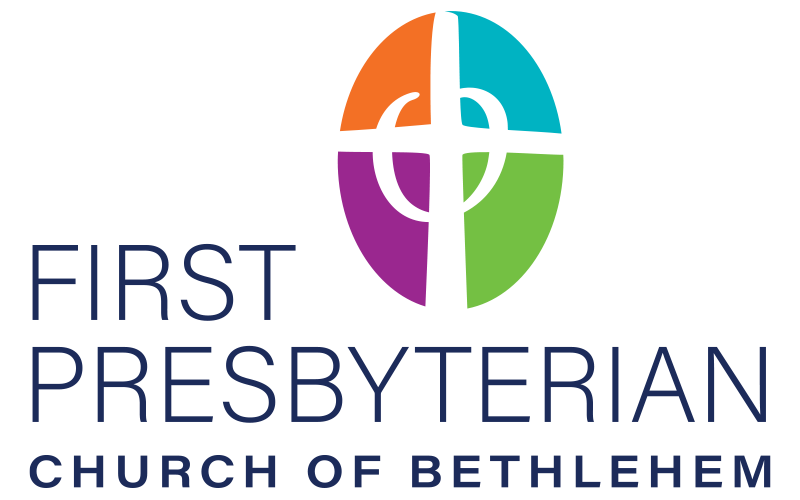By The Rev. Lindsey Altvater Clifton
Today we circle back to a text often preached on Trinity Sunday – the Sunday following Pentecost – where age-old questions emerged once again, still essentially unanswered: Why does one God need three names? How does on God inhabit three forms? How can God be both three and one? How can God be God’s own incarnate son? And if Jesus is God, then to whom is he so often talking? Is the Spirit the spirit of God, the spirit of Jesus, or the spirit of someone or something else altogether?
Though there are many theologians, scholars,  preachers, and lay people who have attempted heady, obscure answers to such questions, they seem to be human efforts to describe something that simple cannot be described: the nature of God. And one Sunday a year, preachers tie themselves into knots trying to explain what the Trinity means.
preachers, and lay people who have attempted heady, obscure answers to such questions, they seem to be human efforts to describe something that simple cannot be described: the nature of God. And one Sunday a year, preachers tie themselves into knots trying to explain what the Trinity means.
Some point to three leaf clovers; others point to the three forms of H20 as water, ice, and steam; but it seems that one Episcopal priest and author really gets it—he explains that when human beings try to describe God, we are like a bunch of oysters trying to describe a ballerina. We simply do not have the capacity to understand something so utterly beyond us… but that has never stopped us from trying.
While it is mysterious and nearly indescribable, the work of the Trinity, triune-unity, is necessary for community, the coming of unity. Trinity and community are intrinsically tied to one another: in gratitude to God, we strive to serve Christ gathered in and living among communities. But without the empowerment and movement of the Spirit, even the most well intentioned human communities become stuck in the rut of complacency or swept up in business or busy-ness.
We need the movement of the Triune God to inspire our being together and our doing together. One of the greek words used to describe this movement of the Trinity is Perichoresis. It’s derived from the Greek peri, “around” and chorein, which has multiple meanings among them being “to make room for”, “go forward” and “contain”. It is often interpreted as co-indwelling or community in being. But perhaps most poignantly, Perichoresis is described as a divine dance.
The idea is that the Trinity dances among us and whirls around us, often unnoticed, urging us to move. We must begin to be more attentive to this Holy Triune presence, looking closely and listening carefully for signs of life and vibrancy and energy, because by the Spirit, God’s desire in Christ is not simply to be among us, but to dance with us, to whirl with us in an intuitive, responsive partnership whose steps so closely mirror one another’s that leader and follower collapse into one. And we must say yes to this invitation to dance in new directions and toward new growth because we are called by God to respond in faith to Jesus Christ by the power of the Spirit for the sake of ourselves and our world.
This call to join the perichoresis party, to dance along with the Triune God is what we often call discernment. It’s the spiritual practice of noticing where we are and where our Holy Dance Partner is leading us. Because when we humans try to lead the dance instead…things sure get messy; we stumble and get out of sync, the steps lack imagination and gravitate toward only what we’ve known or seen before.
We are certainly in a season of discernment. Both in our nation and in the wider world. But I’d say here at First Presbyterian Church, Bethlehem, too. This particular community has lived through a great deal in the last five years—the end of a painful, traumatic years-long schism; widespread social unrest in the face of injustice; a global pandemic; and the loss of a much beloved Pastor Emeritus.
So in this season of change, we’d be well served by allow our Holy Dance Partner to slow down the tempo. We’re invited to pay attention to the feelings and emotions evoked by our reflection on where we’ve been and where we are now. Such inner, communal work isn’t easy. But it is necessary to begin to wonder what shape the dance might take next. For now we exist in the discomfort of this liminal, in-between space.
At the risk of mixing metaphors, we are at a crossroads. And we must linger here awhile to catch our breath before we’ll be ready to sense which turn to make, which path forward is our most faithful, as we commit anew to a shared, communal identity in Christ as a church.
In John, we find the disciples nearing their big crossroads. Just before Jesus was to depart from them, we see them gathered. And we hear Jesus say to them and to us, I think: “I still have many things to say to you, but you cannot bear them now.” They aren’t ready for what’s next yet. And we aren’t either. But he promises that the Spirit of truth will come to be their guide, and I trust that the same is true for us, as well.
It gives me much comfort and much hope to know that the Triune God meet us at this crossroads. But we all know that crossroads-discernment isn’t exactly easy for us as individuals, much less as a community. Indeed, when we’re at the crossroads together, there are many voices; that’s the complexity of community. It isn’t about where any one of us thinks the church should go; it’s about what the Triune God is calling us co-create together.
You see, the Trinity offers us a vision for the shape of our communities. Through the work of the Trinity, we are not only created by God or redeemed through Christ, but rather we are both created by God, redeemed through Christ, and moved, empowered, sustained by the Holy Spirit. In community, we are not to live into the “only this, or that” dualistic vision the world offers, but rather a complex, mysterious, and even difficult “both, and” Trinitarian vision.
To be at a crossroads as a community is to listen for nudge of the Trinity to set aside dichotomies or division; it can’t be about us or them. It must be about all of us together. And that’s difficult work. Because sometimes it means giving up something that’s comfortable for “us” to embracing change that creates space for “them,” so that we might all be in community together.
In a similar way, we must not make the false choice to focus primarily on our self-preservation as a congregation over and above the needs of the world and the central calling of our faith—to follow Jesus in loving and serving our neighbors most in need and offering solidarity to those on the margins.
We could choose to focus only on the realities of being a much smaller church than we once were—at the end of 2021, we reported to the denomination an active membership of 340 member, when it used to be 2600. We could choose to focus only on having a much smaller annual budget while still having the same enormous campus—over 100,000 square feet of building space and over 30 acres of land—along with its millions of dollars in deferred maintenance. We could choose to focus only on our problems and challenges, exerting all of our efforts toward our institutional survival.
But to do so would be deeply unfaithful and even sinful. A choice toward such a focus ignores the heart of our calling as people of faith to respond to God’s grace shown to us in Jesus Christ and nurtured in us through the Holy Spirit—to love and serve God and neighbor with all that we have and all that we are. To be honest with you, I couldn’t serve a church that prioritized its self-preservation over and above the deep and growing needs in our world.
Largely because it wouldn’t be a church anymore. It’d be a social club. And many in my generation are weary of the hypocrisy that comes from institutions that say they follow Jesus but in practice show that they care more about themselves than they do about others based on how they spend their time and how they use their resources.
If we really hope to grow, we must let go of fear and scarcity and take up courage and imagination; we must be willing to make hard choices that might sacrifice our own comfort and resources to serve those most in need. We must be open to the Triune God leading us in a dance we don’t yet know the steps to. We must find a spirit of peace about the work that lies ahead. And we remember that the most essential question is “Would anyone outside of our membership miss us if we were gone?”
And friends, it is going to take this whole community at the crossroads together to chart whatever path may be. All of us together make a truly vital church, and all of us together experience God’s presence, respond to the Christ’s grace, and heed the Spirit’s call differently. And as a community, we give up some of what we have for the needs of the wider community of which we are a part. It is both the gift and the challenge of vital church, of living community. And thank God we don’t do it alone.
In the dance, we follow. May that give us a spirit of peace with which we might face the unknown and learn the new steps. At the crossroads, we pause and listen. And we hear Truth’s voice beckon, saying “if you are faithful, all will be well.” In the dance and at the crossroads, we are a community. And we seek to join the perichoresis party, trusting in the goodness and guidance of the Triune God, seeking to be faithful people, and following the divine dance as it unfolds. May it be so, friends. This day, and each day. In the name of the:
Creator, Redeemer, Sustainer.
Maker, Word, Wisdom.
They, He, She.
Activist, Organizer, Protestor.
Earth-maker, Pain-bearer, Life-giver.
Aggravation, Restoration, Imagination.
Amen.
